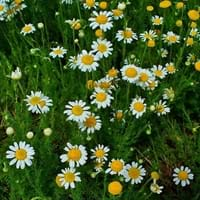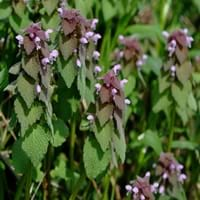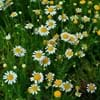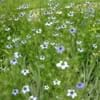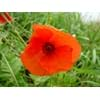Type
Shrub
Flowering Plants
Origin
North America, Western United States, Canada
World/Pandemic, Europe, Asia
Types
Not Available
Not Available
Habitat
Along Railroads, Gravels, Roadsides, Rocky areas
Cultivated Beds, gardens
USDA Hardiness Zone
4-9
4-8
AHS Heat Zone
12 - 1
Not Available
Sunset Zone
Not Available
Not Available
Habit
Upright/Erect
Spreading
Flower Color
Yellow green, Chartreuse
Purple, Pink
Flower Color Modifier
Bicolor
Bicolor
Fruit Color
Not Available
Not Available
Leaf Color in Spring
Green, Dark Green
Purple, Dark Green
Leaf Color in Summer
Green, Dark Green
Purple, Dark Green
Leaf Color in Fall
Green, Dark Green
Not Available
Leaf Color in Winter
Light Green
Light Green
Leaf Shape
Cone shaped
Oval to egg shaped
Plant Season
Not Available
Not Available
Sunlight
Full Sun, Partial Sun, Partial shade
No Shade, Partial shade
Growth Rate
Very Fast
Very Fast
Type of Soil
Clay, Loam, Sand
Clay, Loam, Sand
The pH of Soil
Acidic, Neutral, Alkaline
Acidic, Neutral, Alkaline
Soil Drainage
Well drained
Average
Bloom Time
Indeterminate
Spring, Late Spring
Tolerances
Drought
Drought
Where to Plant?
Ground
Ground
How to Plant?
Seedlings
Root Division, Seedlings
Plant Maintenance
Medium
Medium
Watering Requirements
Requires a lot of watering
Average Water Needs, Do Not over Water, Requires regular watering
In Summer
Lots of watering
Lots of watering
In Spring
Moderate
Moderate
In Winter
Average Water
Average Water
Soil pH
Slightly Acidic
Slightly Acidic
Soil Type
Dry, Sandy
Clay, Moist, Well drained
Soil Drainage Capacity
Poorly Drained
Moist, Well drained
Sun Exposure
Full Sun
No Shade, Partial shade
Pruning
Remove damaged leaves, Remove dead branches, Remove dead leaves
Pinch or prune as they grow to promote branching and bushiness, Remove deadheads
Fertilizers
All-Purpose Liquid Fertilizer
All-Purpose Liquid Fertilizer
Pests and Diseases
Mealybugs, Nematodes, White grubs
Not Available
Plant Tolerance
Drought
Drought
Flowers
Insignificant
Showy
Flower Petal Number
Not Available
Single
Fragrant Bark/Stem
Yes
Yes
Foliage Texture
Fine
Medium
Foliage Sheen
Glossy
Matte
Attracts
Not Available
Not Available
Allergy
Not Available
no allergic reactions
Aesthetic Uses
Bonsai, Showy Purposes
Ground Cover
Beauty Benefits
Not Available
Not Available
Environmental Uses
Air purification
Air purification
Medicinal Uses
Digestive disorders
Astringent, Diaphoretic, Diuretic, Purgative, Styptic
Part of Plant Used
Flowers, Leaves
Flowers, Leaves
Other Uses
Added to salads, Used in making tea
Employed in herbal medicine, Used in Homeopathy
Used As Indoor Plant
No
No
Used As Outdoor Plant
Yes
Yes
Garden Design
Flower borders, Landscape
Groundcover
Botanical Name
Matricaria discoidea
LAMIUM purpureum
Common Name
Pineapple Weed, Ray-less Dogfennel, disc mayweed, wild chamomile
Purple Archangel, Purple Deadnettle, Red Deadnettle
In Hindi
Pineapple Weed
Purple Deadnettle
In German
Strahlenlose Kamille
Lila Taubnessel
In French
Matricaire odorante
Violet Ortie blanche
In Spanish
Pineapple Weed
Púrpura Deadnettle
In Greek
ξύλο ανανά
μωβ Deadnettle
In Portuguese
Pineapple Weed
Roxo Deadnettle
In Polish
Rumianek bezpromieniowy
Jasnota purpurowa
In Latin
Pineapple Weed
Purpura Deadnettle
Phylum
Magnoliophyta
Magnoliophyta
Class
Magnoliopsida
Magnoliopsida
Family
Asteraceae
Lamiaceae
Clade
Angiosperms, Asterids, Eudicots
Angiosperms, Asterids, Eudicots
Tribe
Anthemideae
Not Available
Subfamily
Not Available
Lamioideae
Number of Species
Not Available
Properties of Pineapple Weed and Purple Deadnettle
Wondering what are the properties of Pineapple Weed and Purple Deadnettle? We provide you with everything About Pineapple Weed and Purple Deadnettle. Pineapple Weed doesn't have thorns and Purple Deadnettle doesn't have thorns. Also Pineapple Weed does not have fragrant flowers. Pineapple Weed has allergic reactions like Not Available and Purple Deadnettle has allergic reactions like Not Available. Compare all the properties and characteristics of these two plants. Find out which of these plant can be used as indoor plant. If you are interested to decorate your house and garden, find out aesthetic uses, compare them and select the plant which will beautify your surrounding. Along with beautification, try comparing medicinal and edible uses of Pineapple Weed and Purple Deadnettle and you can choose the plant having best and most benefits.
Season and Care of Pineapple Weed and Purple Deadnettle
Season and care of Pineapple Weed and Purple Deadnettle is important to know. While considering everything about Pineapple Weed and Purple Deadnettle Care, growing season is an essential factor. Pineapple Weed season is Not Available and Purple Deadnettle season is Not Available. The type of soil for Pineapple Weed is Clay, Loam, Sand and for Purple Deadnettle is Clay, Loam, Sand while the PH of soil for Pineapple Weed is Acidic, Neutral, Alkaline and for Purple Deadnettle is Acidic, Neutral, Alkaline.
Pineapple Weed and Purple Deadnettle Physical Information
Pineapple Weed and Purple Deadnettle physical information is very important for comparison. Pineapple Weed height is 12.70 cm and width 12.70 cm whereas Purple Deadnettle height is 10.20 cm and width 15.20 cm. The color specification of Pineapple Weed and Purple Deadnettle are as follows:
Pineapple Weed flower color: Yellow green and Chartreuse
Pineapple Weed leaf color: Green and Dark Green
Purple Deadnettle flower color: Purple and Pink
- Purple Deadnettle leaf color: Purple and Dark Green
Care of Pineapple Weed and Purple Deadnettle
Care of Pineapple Weed and Purple Deadnettle include pruning, fertilizers, watering etc. Pineapple Weed pruning is done Remove damaged leaves, Remove dead branches and Remove dead leaves and Purple Deadnettle pruning is done Pinch or prune as they grow to promote branching and bushiness and Remove deadheads. In summer Pineapple Weed needs Lots of watering and in winter, it needs Average Water. Whereas, in summer Purple Deadnettle needs Lots of watering and in winter, it needs Average Water.
